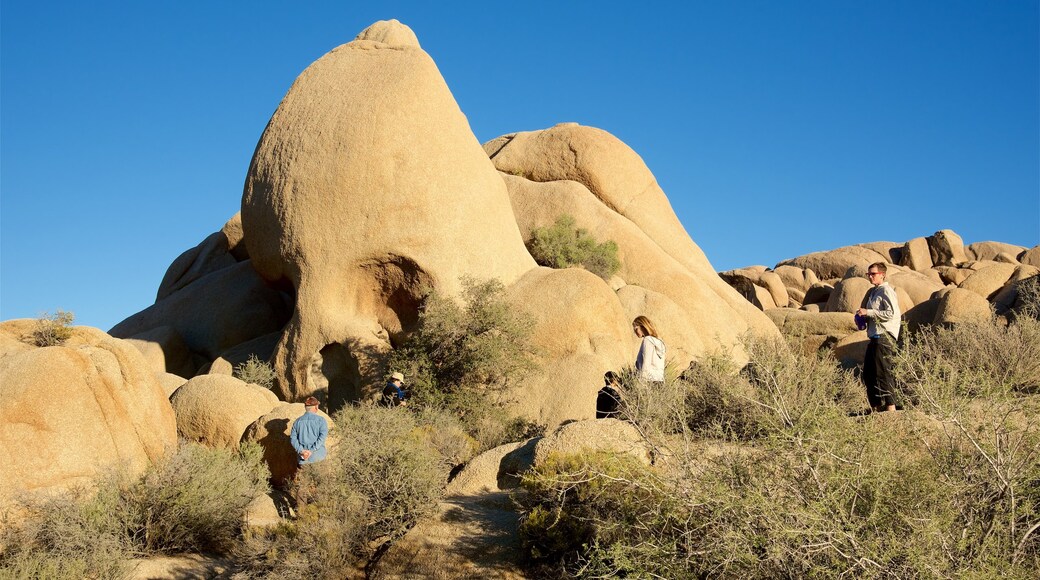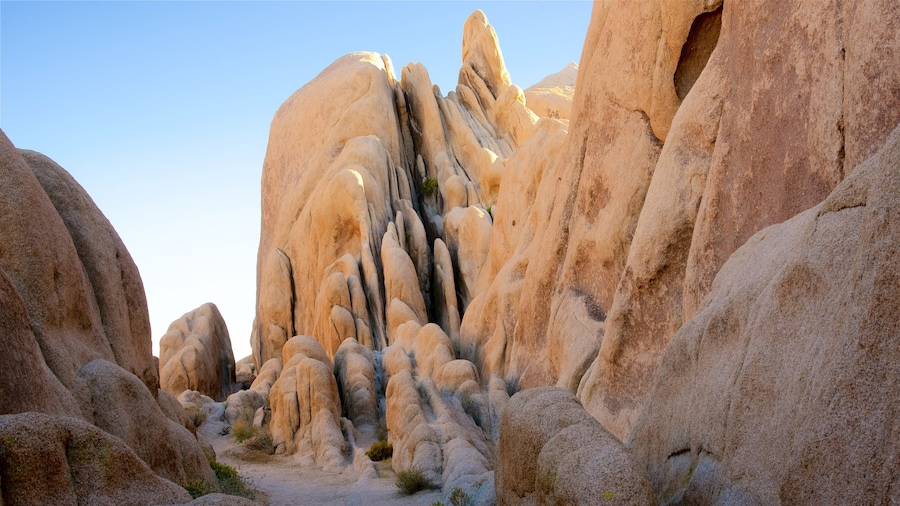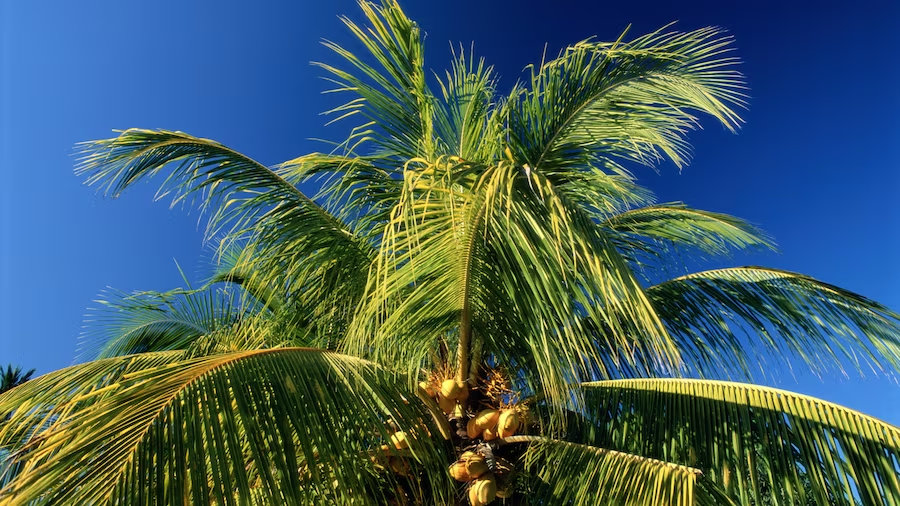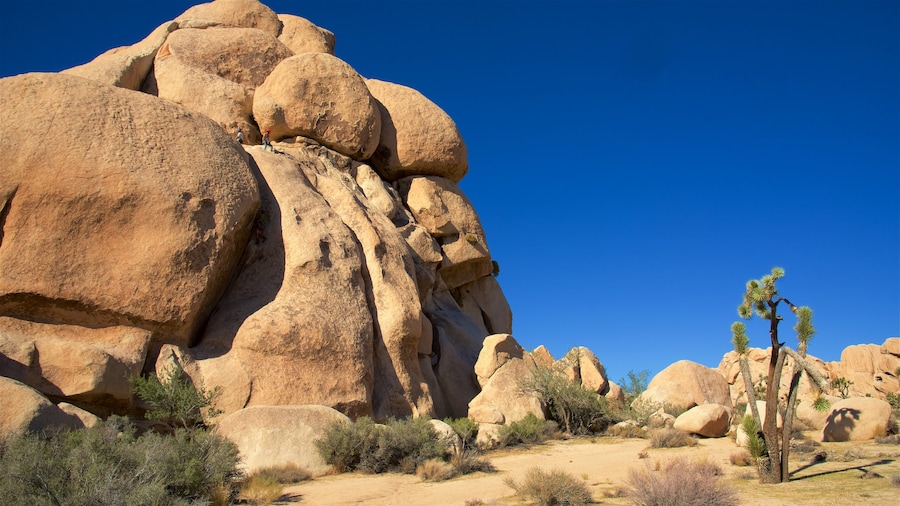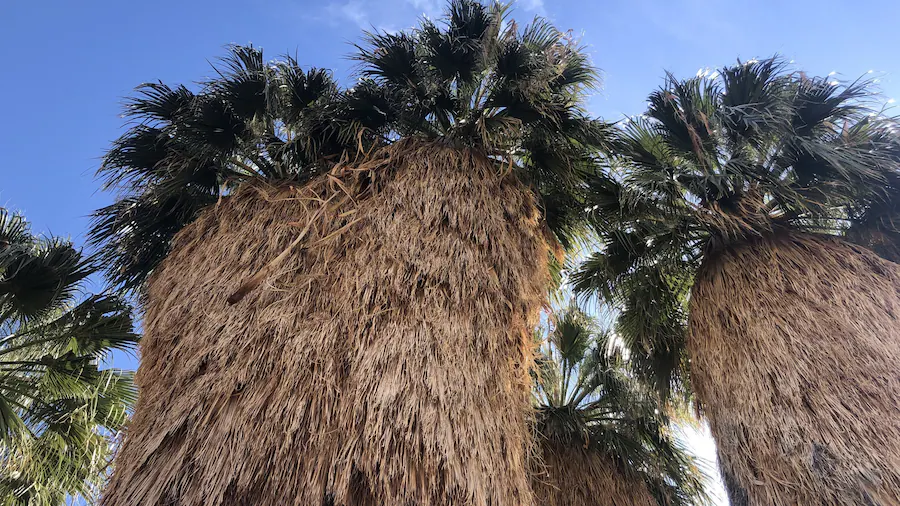Marvellous rock formations, desert wildlife and examples of the biodiversity of the Mojave Desert are visible along the short trail that leads to this landmark.
Skull Rock is among the most photographed and recognizable of the thousands of rocks that decorate the Joshua Tree National Park. It stands in the park’s Jumbo Rocks section and is surrounded by many interesting natural landmarks. Skull Rock and the other formations in the vicinity are monzonite rocks that began life as liquid molten buried deep inside the Earth’s crust. They became exposed as the molten cooled and then pushed upwards to break through the surface.
Start at the main attraction, so called because it resembles the shape of a giant human skull. A rounded forehead, two eye sockets and a nose are instantly noticeable. The evolution of the rock began hundreds of years ago when rain gathered in small depressions in the rock and triggered the erosion of the granite. Climb into the hollowed-out eyes to take a classic Joshua Tree National Park photo.
Stretch your legs with a walk on the 1.7-mile (2.7-kilometer) long Skull Rock Trail. Signs along the way provide valuable information about the diversity of the flora and fauna that thrives in the Mojave Desert. Spot examples of plant species, such as cacti, cholla and yucca, from both the high and low desert regions of the Mojave. Keep watch for birds, chuckwalla lizards and jackrabbit.
Spend time admiring, clambering over and snapping photos of the other surreal-looking boulders scattered around the trail. Find a quiet spot, sit on a rock and enjoy the ghostly silence of the national park.
The attraction is a 10-minute drive from the Joshua Tree National Park North Entrance, at which you can pay the park admission fee. The Jumbo Rocks Campground is a basic campsite with 124 pitches. You can park directly in front of the rock, although spaces tend to fill up fast. Otherwise use the car parks at the campground and nearby Live Oak Picnic Area.
Skull Rock is among the busiest attractions of the park and there’s often a queue of people waiting to take photos.
